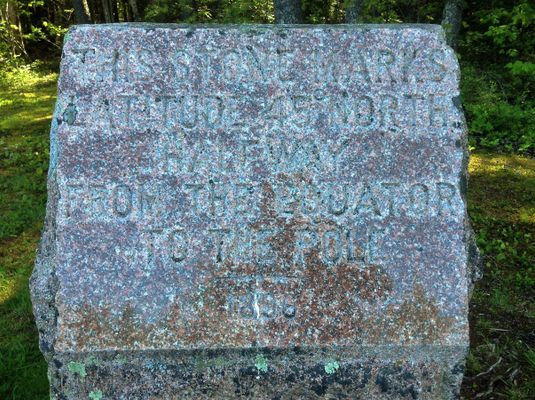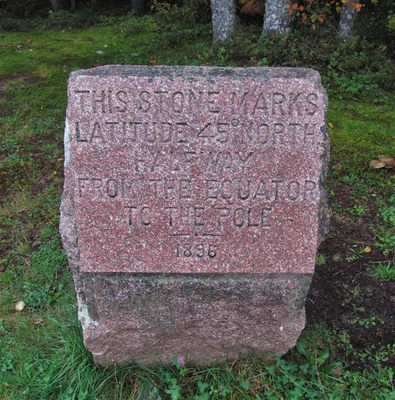About
The 45th parallel wraps around the globe marking the halfway point between the equator and the North Pole. There are several latitudinal markers in North America that commemorate this imaginary line, and the oldest one is in the little town of Perry, Maine.
In the late 1880s, the United States Coast and Geodetic Survey crew were working their way northward, along the coast of Maine to the St. Croix River. Topographers Charles Meigs Bache and Alexander Wadsworth Longfellow (brother of the great poet) noticed a house in Perry that just happened to fall nearly on top of the 45th parallel, missing it by the tiniest fraction of a degree (only a few tenths of a second).
The cartographers placed a brass pin next to the house to mark the spot where line crosses the main road. A few years later, the citizens of Perry decided to erect a more permanent marker, which still stands today.
It was made by the Maine Red Granite Company in Red Beach, Maine, and was ordered in 1896 (the date carved into the block). It was placed and dedicated in 1899, on the 4th of July, making it the first such marker in the U.S.
The stone actually sits just a bit south of actual 45th, missing it by about 140 feet. But that took much more modern equipment to determine. Bache and Longfellow were awfully close.
The New England poet Samuel French Morse wrote about this marker in his poem "A Marker at Perry, Maine", in his volume "The Changes" (1964).
Related Tags
Know Before You Go
Perry is at the far north end of the Maine coast, just before you'd be in Canada. The marker is located in a small park and picnic area by the side of US Route 1, and is visible from the road. It is about one mile north of the bridge leading out the town of Perry, or 1.5 miles south of the intersection of US Route 1 and Shore Road.
Published
June 19, 2017
































